
Clarendon County is a county located below the fall line in the Coastal Plain region of U.S. state of South Carolina. As of 2010, its population was 34,971. Its county seat is Manning.

Caswell County is a county in the U.S. state of North Carolina. It is located in the Piedmont Triad region of the state. At the 2020 census, the population was 22,736. The county seat is Yanceyville.

Manning is a city in and the county seat of Clarendon County, South Carolina, United States. The population was 4,108 as of the 2010 census, with an estimated population in 2018 of 3,941. It was named after former South Carolina governor John Laurence Manning.

Summerton is a town in Clarendon County, South Carolina, United States. Per the 2020 census, the population was 814.
Briggs v. Elliott, 342 U.S. 350 (1952), on appeal from the U.S. District Court for the Eastern District of South Carolina, challenged school segregation in Summerton, South Carolina. It was the first of the five cases combined into Brown v. Board of Education (1954), the famous case in which the U.S. Supreme Court declared racial segregation in public schools to be unconstitutional by violating the Fourteenth Amendment's Equal Protection Clause. Following the Brown decision, the district court issued a decree that struck down the school segregation law in South Carolina as unconstitutional and required the state's schools to integrate. Harry and Eliza Briggs, Reverend Joseph A. DeLaine, and Levi Pearson were awarded Congressional Gold Medals posthumously in 2003.
Brown v. Board of Education National Historical Park was established in Topeka, Kansas, on October 26, 1992, by the United States Congress to commemorate the landmark decision of the U.S. Supreme Court in the case Brown v. Board of Education aimed at ending racial segregation in public schools. On May 17, 1954, the Supreme Court unanimously declared that "separate educational facilities are inherently unequal" and, as such, violated the 14th Amendment to the United States Constitution, which guarantees all citizens "equal protection of the laws."
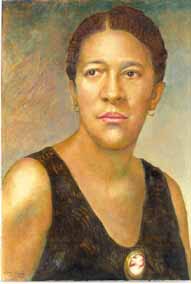
Modjeska Monteith Simkins was an important leader of African-American public health reform, social reform and the Civil Rights Movement in South Carolina.
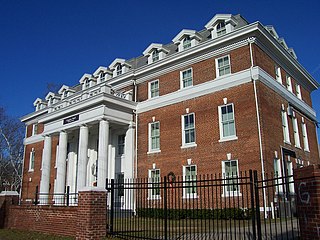
Allen University is a private historically black university in Columbia, South Carolina. It has more than 600 students and still serves a predominantly Black constituency. The campus is listed on the National Register of Historic Places as Allen University Historic District.
Joseph Armstrong DeLaine was a Methodist minister and civil rights leader from Clarendon County, South Carolina. He received a B.A. from Allen University in 1931, working as a laborer and running a dry cleaning business to pay for his education. DeLaine worked with Modjeska Simkins and the South Carolina NAACP on the case Briggs v. Elliott, which challenged segregation in Summerton, South Carolina.
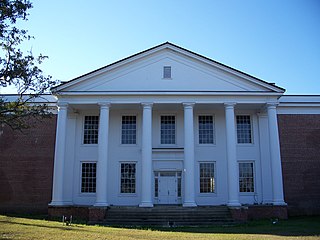
Jefferson County Middle / High School (JCMHS) is a public school in unincorporated Jefferson County, Florida, with a Monticello postal address. A part of Jefferson County Schools, it serves grades 6 - 12. The school's mascot is a tiger and the school colors are orange and blue. It is at 50 David Road, 4 miles (6.4 km) south of the center of Monticello. The school was formerly housed in the historic Jefferson Academy building, opened in 1852 in the first brick school building in Florida. Minority enrollment at Jefferson County Middle / High School is about 340 and 84 percent minority.
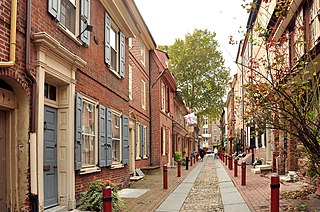
Historic districts in the United States are designated historic districts recognizing a group of buildings, properties, or sites by one of several entities on different levels as historically or architecturally significant. Buildings, structures, objects and sites within a historic district are normally divided into two categories, contributing and non-contributing. Districts greatly vary in size: some have hundreds of structures, while others have just a few.

The Robert Russa Moton Museum is a historic site and museum in Farmville, Prince Edward County, Virginia. It is located in the former Robert Russa Moton High School, considered "the student birthplace of America's Civil Rights Movement" for its initial student strike and ultimate role in the 1954 Brown v. Board of Education case desegregating public schools. It was designated a National Historic Landmark in 1998, and is now a museum dedicated to that history. In 2022 it was designated an affiliated area of Brown v. Board of Education National Historical Park. The museum were named for African-American educator Robert Russa Moton.

Charles Morrison Robinson, most commonly known as Charles M. Robinson, was an American architect. He worked in Altoona and Pittsburgh, Pennsylvania from 1889 to 1906 and in Richmond, Virginia from 1906 until the time of his death in 1932. He is most remembered as a prolific designer of educational buildings in Virginia, including public schools in Richmond and throughout Virginia, and university buildings for James Madison University, College of William and Mary, Radford University, Virginia State University, University of Mary Washington, and the University of Richmond. He was also the public school architect of the Richmond Public Schools from 1910 to 1929. Many of his works have been listed on the National Register of Historic Places.
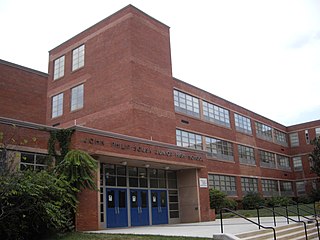
The John Philip Sousa Middle School, formerly the John Philip Sousa Junior High School, is a public school located at 3650 Ely Place in SE area of Washington, D.C. Located in the city's Fort Dupont neighborhood, it serves grades 6–8. Its school building, built in 1950, was the scene of civil rights action not long after its construction. Twelve black students were denied admission to the all-white school. This action was eventually overturned in the landmark 1954 Supreme Court decision in Bolling v. Sharpe, which made segregated public schools illegal in the District of Columbia. The defeat of the legal doctrine "separate but equal" marked an early victory in the modern Civil Rights Movement.

This is a list of the National Register of Historic Places listings in Clarendon County, South Carolina.

This is a list of the National Register of Historic Places listings in Waseca County, Minnesota. It is intended to be a complete list of the properties and districts on the National Register of Historic Places in Waseca County, Minnesota, United States. The locations of National Register properties and districts for which the latitude and longitude coordinates are included below, may be seen in an online map.

The Clarendon School is a historic school building located in the Virginia Square neighborhood of Arlington County, Virginia. The structure was built in 1910 based on a design by noted Virginia architect Charles M. Robinson.

James Building, also known as Summerton Hardware and Summerton Hardware Company, is a historic commercial building located at Summerton, Clarendon County, South Carolina. It was built in 1905, and is a two-story brick building with a cast-iron storefront. The building has two storefronts and interior spaces with single-story sections to the rear. The building housed the telephone exchange and a hardware store and would have been a central focus of the town in the early-20th century.

Senn's Grist Mill-Blacksmith Shop-Orange Crush Bottling Plant is a complex of historic commercial buildings located at Summerton, Clarendon County, South Carolina. The complex consists of three interconnected early-20th century buildings of similar size and construction. The grist mill was built about 1905, is an example of small independent grist mills that were commonplace in rural communities across the South. The blacksmith shop and bottling plant, built about 1921, are typical of early-20th century light industrial buildings. The complex supplied the local agricultural sector with essential goods and services for nearly a century.

Santee Indian Mound and Fort Watson is a historic archaeological site located in North Santee, Clarendon County, South Carolina, near Summerton. Santee Indian Mound was part of a Santee mound village complex; it was probably a burial and/or temple mound, likely constructed in some cultural period between 1200–1500.




















